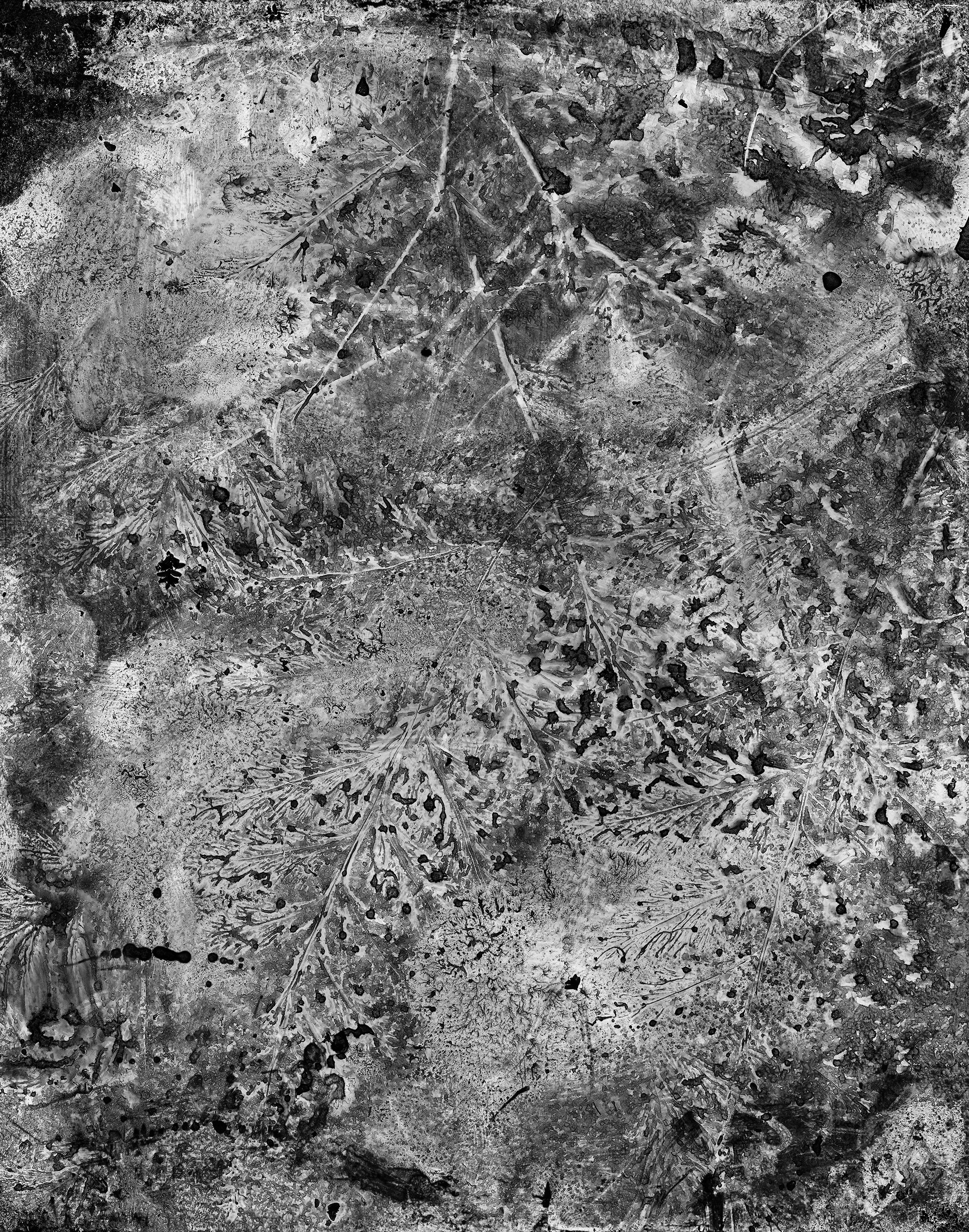The Island of Rota
Translated from French, ‘cliché-verre’ means glass picture. The 19th century French painters Corot, Millet, Daubigny and others, used this method of making pictures, which involves creating a hand made negative. These artists took pieces of flat glass, smoked them with a lit candle, and drew images in the soot-covered surface with a sharp pointed instrument. Then they would place the glass over a sheet of photographic paper and expose it to light. When light passes through the clear parts of the glass that is scratched, it produces a line drawing in black on a white background. Contact prints made from these negatives have a wonderful sense of belonging to the realms of both drawing and photography.
I made this body of cliche-verres about ferns and cycads for a limited edition publication for The Museum of Modern Art organized by May Castleberry, editor of Contemporary Editions for the Library Council of The Museum of Modern Art, featuring the writing of Oliver Sacks and the design of Ted Muehling. The book entitled “The Island of Rota” was published in the fall of 2010. Read more about this book here, and see pictures of it here.
Cliché Verre
In my own cliche-verre work, I coat glass plates with several layers of ink to form interesting tonal densities. With ideas of creating a series of invented vegetative worlds, I pressed cuttings of ferns and cycads in half dried ink on glass plates. The finished negatives are then digitally scanned and printed. The images that I’m most happy with are the result of multiple pressings and repeated inking which, to my eye, border on chaos. Making cliche-verre images gives me a welcome opportunity to play with painting and drawing in the most rudimentary way; as a photographer, it’s nice to be able to get my hands dirty.
The relationship between photography and drawing goes back to photography’s birth. In 1833,Fox Talbot, frustrated by a clumsy drawing he made with a camera lucida in Lake Como, Italy, had the brilliant idea to “fix” an image he remembered seeing on the ground glass of a portable camera obscura he used in an earlier outing. Later, at home in England, that “fix” resulted in the invention of photography.































